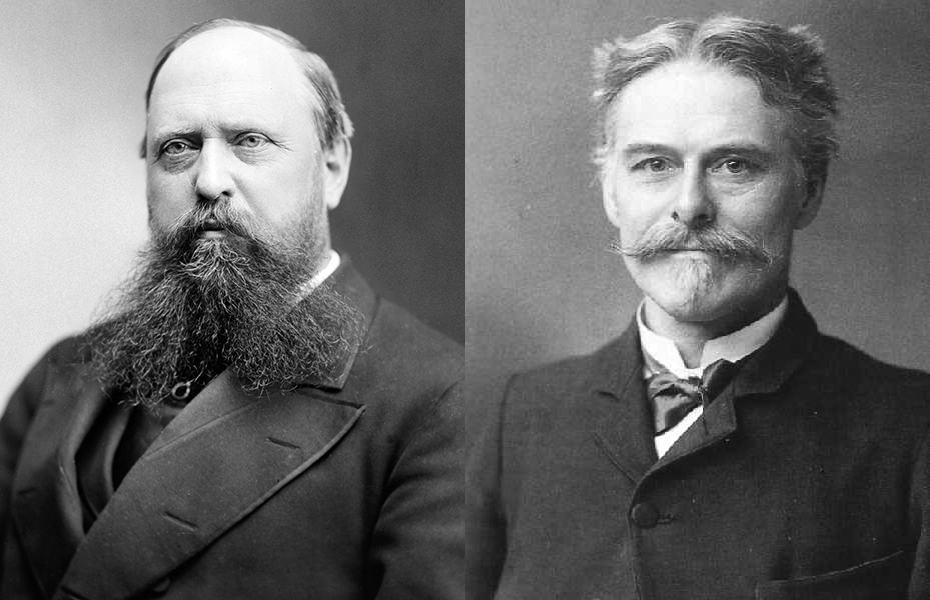The Bone Wars, also known as the Great Dinosaur Rush, was a period of intense and ruthlessly competitive fossil hunting and discovery during the Gilded Age of American history, marked by a heated rivalry between Edward Drinker Cope (of the Academy of Natural Sciences of Philadelphia) and Othniel Charles Marsh (of the Peabody Museum of Natural History at Yale). Each of the two paleontologists used underhanded methods to try to outdo the other in the field, resorting to bribery, theft, and the destruction of bones. Each scientist also sought to ruin his rival's reputation and cut off his funding, using attacks in scientific publications.
Their search for fossils led them west to rich bone beds in Colorado, Nebraska, and Wyoming. From 1877 to 1892, both paleontologists used their wealth and influence to finance their own expeditions and to procure services and dinosaur bones from fossil hunters. By the end of the Bone Wars, both men had exhausted their funds in the pursuit of paleontological supremacy.
Cope and Marsh were financially and socially ruined by their attempts to outcompete and disgrace each other, but they made important contributions to science and the field of paleontology, and provided substantial material for further work—both scientists left behind many unopened boxes of fossils after their deaths. The efforts of the two men led to more than 136 new species of dinosaurs being discovered and described. The products of the Bone Wars resulted in an increase in knowledge of prehistoric life, and sparked the public's interest in dinosaurs, leading to continued fossil excavation in North America in the decades to follow. Many historical books and fictional adaptations have been published about this period of intense fossil-hunting activity.
Text from Wikipedia